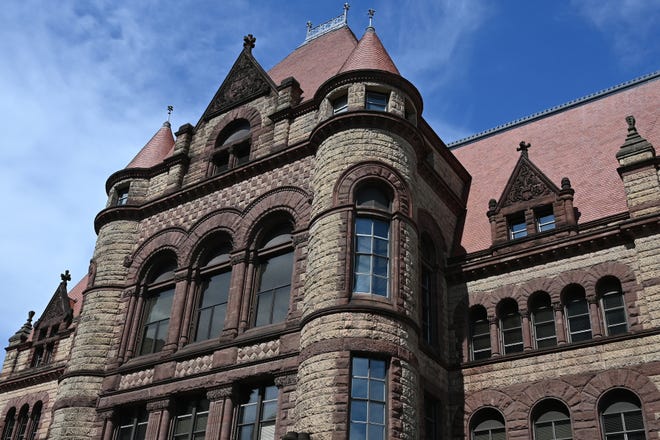Opinion: We must face city's budget shortfalls head-on

When the city of Cincinnati's budget is fiscally sound and structurally balanced, it provides for safe working conditions for city employees and the safety of our citizens. It provides well-maintained infrastructure and safe bridges, sidewalks and bike lanes. It provides for vibrant parks and recreation facilities. It provides our city employees the equipment and personnel needed for a safe working environment. It ensures that our citizens are receiving the resources and services they need.
But when we do not take care of our budget, all of this is at risk.
The city’s budget crisis is the consequence of terrible decisions in Columbus that resulted in the loss of the state's Local Government Fund and other sources of income from the state that cities and townships relied upon for decades. This is not the fault of City Council, but it is its job to respond in a transparent and effective manner. That’s the opportunity that we have.
There are two city budgets. There is the capital budget, which pays for roads, sidewalks, firehouses, and parks and recreation infrastructure. And there is the operating budget, which pays for the operations of city government, primarily the salaries for over 6,000 city employees. For the last 10 years, we have taken money from the capital budget to plug holes in the operating budget.
If your roof was leaking and water was pouring into your house, would you fix it or would you put it off? You would fix it. When we take money from the capital budget and use it to plug a shortfall in the city’s operating budget, it adds to a growing list of city infrastructure that is not being maintained. It’s just like water leaking into our house.
The parks and recreation's operational expenses with a combined budget of $1.7 million were shifted to the capital budget. The result is that they had $1.7 million less in necessary maintenance for our facilities. Recently, the parks department was forced to apply for a demolition permit of a historic bathhouse in Owl’s Nest Park.
Due to the structural imbalance, in five years, parks will be $41 million behind in necessary maintenance. Recreation will be behind $130 million. The city’s health centers, which take care of our most vulnerable citizens, will be behind $2 million. In transportation – roads, bridges, pedestrian and bike safety – the city will be a whopping $194 million behind in necessary maintenance.
The good news is, we can fix this!
At City Hall, we have to be transparent and face this issue head-on. This starts with an audit of the capital and operating budgets so we can align all of our expenses properly. Once our funds are back in the correct place, we need to identify a path forward by analyzing our city’s needs through a commission.
We’ve done something like this in the 1908s called the Smale Commission. John Smale, then the CEO of P&G, and a team of business and community leaders did an analysis of the city’s infrastructure to identify the needs, costs and efficiencies of Cincinnati at the time. This model worked because we correctly identified our city’s needs and found the revenue necessary to make it happen.
The Smale Commission identified and corrected a critical infrastructure problem, and it worked until the loss of the state's Local Government Fund. We can do this again now. I propose a Smale-like commission to analyze where the city's needs and efficiencies are and to make recommendations so we can fund basic city services and invest in affordable housing and equitable economic development.
We can fix this. Transparency. Accountability. Remediation. With these principles guiding us, we can take care of our existing infrastructure and build upon it, so that we can stop the water from leaking from our roof and all Cincinnatians can have better, safer and healthier lives!
Jeff Cramerding of West Price Hill is an attorney, longtime community activist and candidate for Cincinnati City Council in November.
